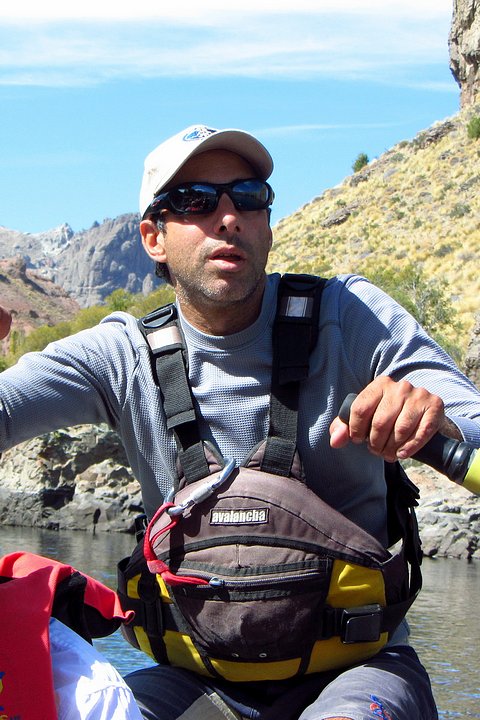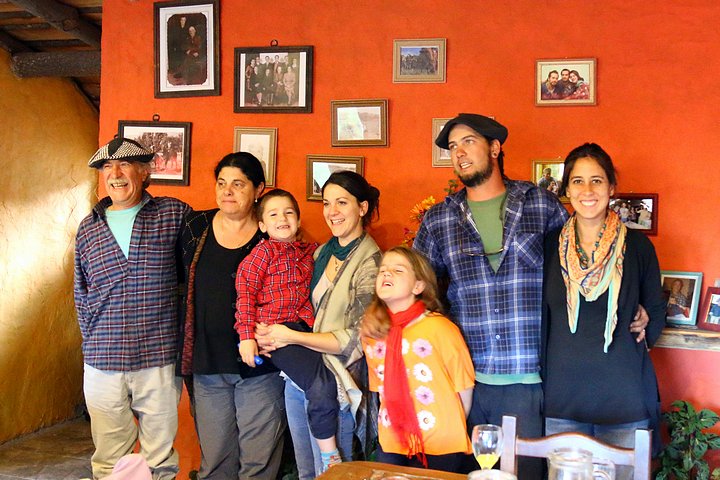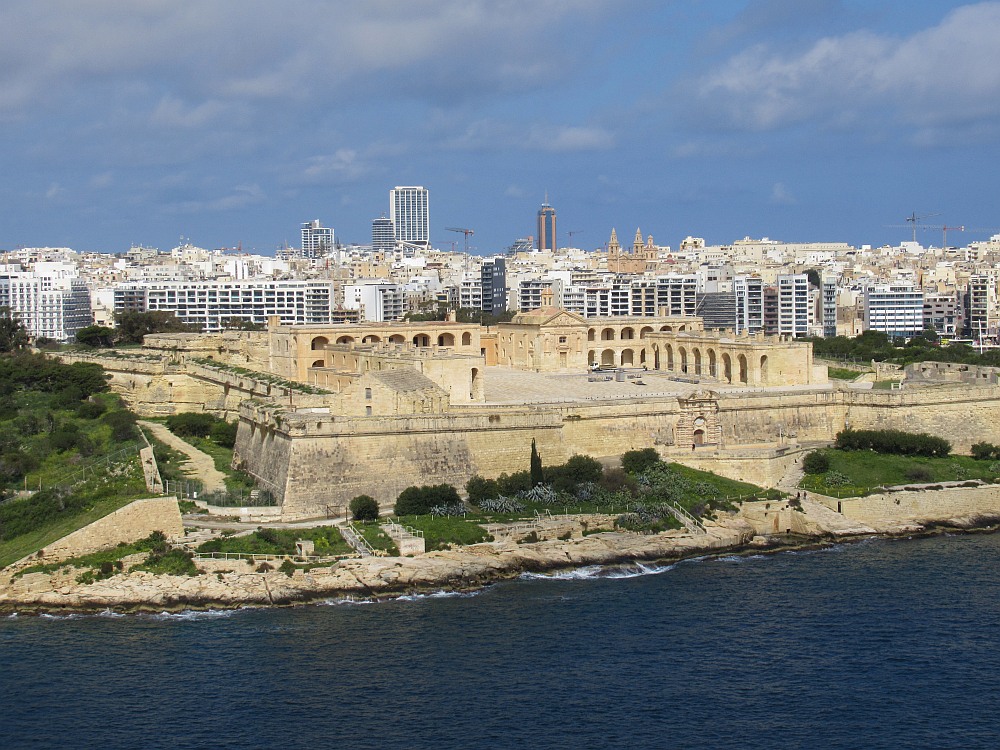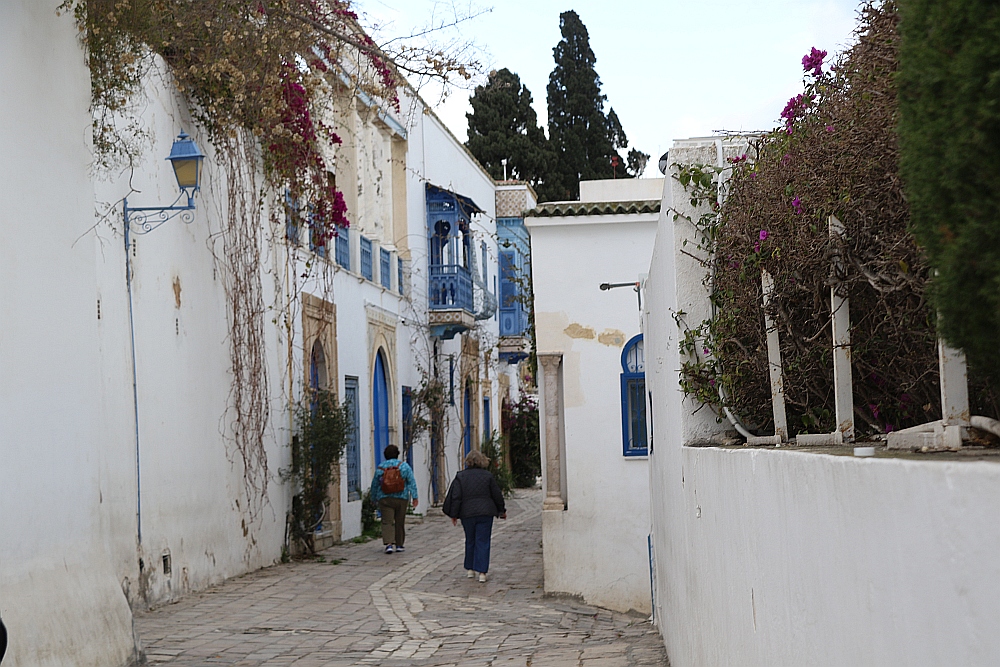Chile & Argentina: Andes To Patagonia Day 6
Chile & Argentina: Andes To Patagonia
Day 06 - Saturday, March 21, 2015 - Mapuche Discussion; Visit Patagonian family; Horseback Ride; Optional Limay River Float Trip
After breakfast at 9:00 we met in one of the conference rooms to meet Christina, a Mapuche woman who told us about her indigenous community. Christina is a "Speaker " for her people, a title awarded by lineage from her family’s ancestors.
Christina is a silversmith and brought samples of her jewelry to show and to sell. As Christian interpreted, she told us about the family structure and government of these agricultural people.
The Mapuche ancestral lands extended throughout southern Chile and Argentina. Now that there are two distinct countries, the Mapuche have no place to go for advocacy. Real estate dealers sell the land and her family has been taken to court to be expelled from their own lands. Sadly, we learned about their struggles against the political corruption and wealthy people who want to live in this beautiful land.
The Mapuche respect the number four, the four seasons, the four divisions of people (elder men, elder women, young men, and young women), as well as the four elements (fire, earth, air, and water).
Grand Circle has relied on this relationship with Christina to educate OAT travelers and these talks also help financially to support the Mapuche cause. Christina ended the presentation with a discussion of the ceremonies and family traditions.
At 10:15 we thanked our Mapuche speaker and went back to our room to get our packs for the busy day. We met again at 10:30 for our river trip. The temperature was 61 degrees and the humidity was 35%.
Eight of us took the rafting optional activity with Christian and Nano. Our 40-minute drive took us east past the airport to our departure beach on the Limay River. We passed out of the Patagonia Forest environment and back into the drier steppe lands.
We reached the river's edge at 11:30. Nano had to unlock the pasture gate; there were a few sheep and two cows, an indication of the lack of nutritious grasses of the steppe lands.
Because of Chaitén Volcano eruption of June 2011 there was a six-inch layer of gray ash all over the ground. Nano was concerned because of a mix-up with the rafting company. We had to wait until almost 1:00 to start the rafting trip.
The location was so lovely we spent our time exploring and taking photos of the trees and shrubs as well as the birds of the pasture ecosystem. There was a flock of Chimango caracara that posed for us.
Always using our previous learnings and discoveries, Annmarie suggested we initiate the Argentinian hobby - protest. Waving our jackets and raising clenched fists, our slogan was "No Raft, No Pesos".
When the truck with the raft finally arrived, and we were on the river, the views were incredible, the water was crystal clear, and the river was cold and calm. As Nano rowed our raft, he told us about the rock formations, trees, and birds of the Limay River.
Some of the birds we saw were Patagonian herons, caracara, black chested buzzard eagle, cormorants, upland geese, black crowned night heron, southern lapwing, and more black-faced ibis.
We had to cut our rafting trip short to meet the rest of our day's schedule. We got off the river and reconnected with our driver who drove us to the ranch where we were supposed to land.
A light lunch was waiting for us. We met Al and Dick who chose to go fly fishing this morning. Because we were running so late, it was an “eat and run” meal. Back on the bus, we had another short drive to change buses and connect with Mary and Cheryl who were on their own this morning.
One of the lessons learned today was that because of the remoteness of the region, there was no way for Christian to communicate with the other two groups. Without the luxury of a cell phone or the basics of a telephone, communication is difficult.
Once we were all back together, Esse told us of some of the other hardships of living in the Patagonian region. Electricity, phone service, and propane gas were recent arrivals. Most families still have cast iron stoves that burn wood.
The next activity was to visit a local ranch family. We drove for another 30 minutes to the Haneck Family Ranch. We meet the members of the family and then we had we had an initiation to mate.
Mate is an herbal green tea popular in Argentina and southern Brazil. Esse explained the protocol of making the tea and about the gourd bowl and the silver straw used for drinking.
Mate is more of a ceremony and tradition, especially popular with friends and family. Sharing the single straw is the familial component of the ceremony.
After the mate demonstration, some went horseback riding. The ride was about 45 minutes on the Haneck’s 156 hectors or 385 acre farm.
The dry Patagonian Steppe land is not suitable for farming, or for grazing large herds of cattle. The Haneck Family has found success in welcoming tourists to their home.
Our dinner consisted of home grown mixed salad, breads, and potato salad, along with grilled lamb, sausage, and beef. Dessert was a crepe with dulce de leche and chocolate.
We thanked our Gaucho family and headed back to Bariloche at 7:30, arriving at 8:20. We travel tomorrow so we packed, showered, got the photos and journal ready for posting.
It will be hard leaving this beautiful Alpine region of Patagonia. The rich and famous come here to party, ride horses, do rafting, and eat chocolate. We have done all of those things and more and will remember this area fondly!
Accommodations: Villa Huinid Hotel - - - Meal: B & D
Please see our Trip Evaluation — Click Here
A Complete Review of Overseas Adventure Travel
Chile & Argentina: The Andes To Patagonia
Christian Vera
Comments
Post a Comment!Wow - I am really going to look forward to this part of my Antarctica trip in 1/16!!!
Featured Journal
Day 18: Mediterranean Navigation
Day 18 - Wednesday, March 19, 2025 – Disembark Ship & Return to USA
It was a dark and rainy morning when we put our luggage outside of our cabin door at 4:15. We met three of our fellow passengers also on the same flight...










